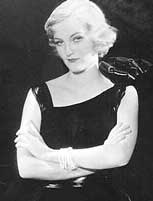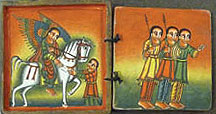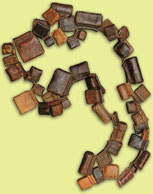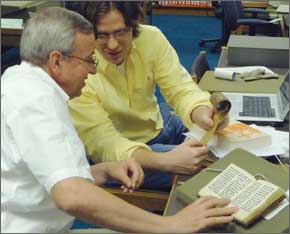April 6
The Great Art of Knowing
Award-winning avant-garde filmmaker and Guggenheim Fellow David Gatten will present his 2004 film, The Great Art of Knowing, an exploration of the library of William Byrd II, a prominent 18th-century Virginia landowner and author. Gatten is the 2010 Duke Distinguished Visiting Filmmaker in the Program of the Arts of the Moving Image at Duke University. His films have been included twice in the Whitney Biennial, and his work is part of the permanent collections of the Art Institute of Chicago and the Whitney Museum of American Art.
Tuesday, 6 April, 12:30-2pm, Perkins Library, Biddle Rare Book Room
April 12

Courtesy of the Jazz Loft Project
Sam Stephenson and the Jazz Loft Project
The Jazz Archive at the Special Collections Library presents Sam Stephenson, director of the Center for Documentary Studies’ Jazz Loft Project, for a lunchtime discussion of the history of this fascinating audio and photographic archive. Stephenson will highlight some of the recent project activities, including a new book, radio series, and traveling photography exhibition. Guests are invited to bring their own lunches; dessert and beverages will be provided.
From 1957 to 1965 legendary photographer W. Eugene Smith made approximately 4,000 hours of recordings on 1,741 reel-to-reel tapes and nearly 40,000 photographs in this loft building in Manhattan’s wholesale flower district where major jazz musicians of the day gathered and played their music.
Monday, 12 April, 12 noon, Perkins Library, Biddle Rare Book Room
April 14
Writing about China
A reception to honor sixteen Duke faculty in Chinese Studies who have written, edited, or contributed to books on diverse subjects, including stone sculptures, aging, postcolonialism, film, and contemporary Chinese colloquialisms.
Wednesday, 14 April, 4-6pm, Perkins Library, Biddle Rare Book Room
April 17
Rescuing JFK

Courtesy of Merriam Press
Theodore M. (Ted) Robinson T’40 and Duke military historian Alex Roland will discuss Robinson’s 2008 book, Water in My Veins: The Pauper Who Helped Save a President. The book recounts Robinson’s role in saving the life of John F. Kennedy on the night of August 1-2, 1953, when a Japanese destroyer rammed PT 109.
Saturday, 17 April, 2pm, Perkins Library, Biddle Rare Book Room. Sponsored by the Libraries and the Duke Alumni Association.
April 20

Fritz Eichenberg
The Lamentations of Jeremiah
Opening Reception for Illustrating the Hebrew Bible
Professors Eric Meyers and Kalman Bland will discuss artists’ visual interpretations of the Hebrew Bible as exemplified in the exhibit by a facsimile of a 15th-century illuminated manuscript, a traditional Torah scroll, and a selection of modern artist books and lithographs. Sponsored by the Libraries and the Center for Jewish Studies.
Tuesday, 20 April, 4:30pm, Perkins Library, Biddle Rare Book Room
April 23
Rare Music in the Rare Book Room
This Rare Music event honors the winners of the first Rare Music Composition Competition. Undergraduate and graduate students were invited to compose a piece of music for an instrument represented in the Duke University Musical Instrument Collections. Winners will receive a cash award and the honor of having their pieces performed during the 23 April program. Sponsored by Duke University Libraries and the Duke University Musical Instrument Collections.
Friday, 23 April, 4pm, Perkins Library, Biddle Rare Book Room
May 5
Friends of the Duke University Libraries Annual Dinner
 This year’s event will include a celebration of the 80th anniversary of the founding of the Friends of the Duke University Libraries as well as an after-dinner program, complete with musical performance, which will showcase the Jazz Archive at Duke.
This year’s event will include a celebration of the 80th anniversary of the founding of the Friends of the Duke University Libraries as well as an after-dinner program, complete with musical performance, which will showcase the Jazz Archive at Duke.
Duke University has a long tradition of campus-based jazz performance, and several of the Jazz Archive’s collections document aspects of that history. These include the Les Brown Scores, the Sonny Burke Papers, the Linda Dahl Collection on Mary Lou Williams, and the Paul Jeffrey Papers.
Invitations to the Friends dinner will be mailed to members. If you have not received an invitation and would like to attend the dinner, contact Lizzy Mottern at lizzy.mottern@duke.edu. Special thanks to SunTrust Bank for their continued involvement as presenting sponsor and to on-campus partner, the Gothic Bookshop, for supporting the Annual Dinner.
Wednesday, 5 May, Doris Duke Center at the Sarah P. Duke Gardens
November 10: Save the Date!
Dave Eggers will deliver the 2010 Weaver Lecture at Duke’s Page Auditorium.

Credit: Michelle Quint
Dave Eggers is the author of six books, including Zeitoun and What Is the What, a finalist for the 2006 National Book Critics Circle Award. Eggers is the founder and editor of McSweeney’s, an independent publishing house based in San Francisco that produces a quarterly journal, a monthly magazine (The Believer), and Wholphin, a quarterly DVD of short films and documentaries. In 2002, with Nínive Calegari he co-founded 826 Valencia, a nonprofit writing and tutoring center for youth in the Mission District of San Francisco. In 2004, Eggers and Lola Vollen co-founded Voice of Witness, a series of books using oral history to illuminate human rights crises around the world.
—From http://www.mcsweeneys.net/authorpages/eggers/eggers.html
Wednesday, 10 November 2010, 6pm, Page Auditorium



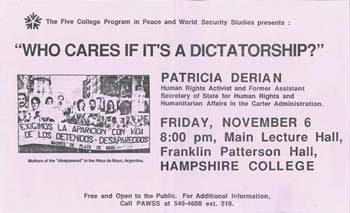



 This year’s event will include a celebration of the 80th anniversary of the founding of the Friends of the Duke University Libraries as well as an after-dinner program, complete with musical performance, which will showcase the Jazz Archive at Duke.
This year’s event will include a celebration of the 80th anniversary of the founding of the Friends of the Duke University Libraries as well as an after-dinner program, complete with musical performance, which will showcase the Jazz Archive at Duke.
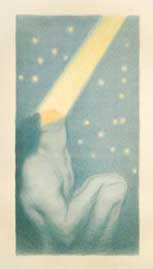
 For over thirty years, fashionable British and American society women, including Mrs. Reginald Vanderbilt, Lady Milford-Haven, Mrs. George Whitney and Anne Morgan, graced advertisements the J. Walter Thompson Company created for Pond’s beauty products. This exhibit presents a selection of these images by prominent photographers Edward Steichen, Cecil Beaton, Louise Dahl-Wolfe, and others.
For over thirty years, fashionable British and American society women, including Mrs. Reginald Vanderbilt, Lady Milford-Haven, Mrs. George Whitney and Anne Morgan, graced advertisements the J. Walter Thompson Company created for Pond’s beauty products. This exhibit presents a selection of these images by prominent photographers Edward Steichen, Cecil Beaton, Louise Dahl-Wolfe, and others.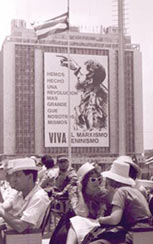
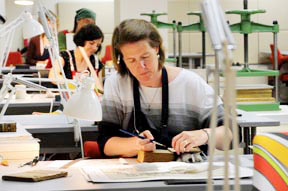
 This year marks the 20th anniversary of the Library Advisory Board, a group of donors who support the Duke University Libraries financially as well as by sharing the expertise they have gained in an array of professions. In preparing for the Board’s anniversary meeting this spring, one of my colleagues reviewed all of the issues of Duke University Libraries that have been published during the past twenty years.
This year marks the 20th anniversary of the Library Advisory Board, a group of donors who support the Duke University Libraries financially as well as by sharing the expertise they have gained in an array of professions. In preparing for the Board’s anniversary meeting this spring, one of my colleagues reviewed all of the issues of Duke University Libraries that have been published during the past twenty years.
